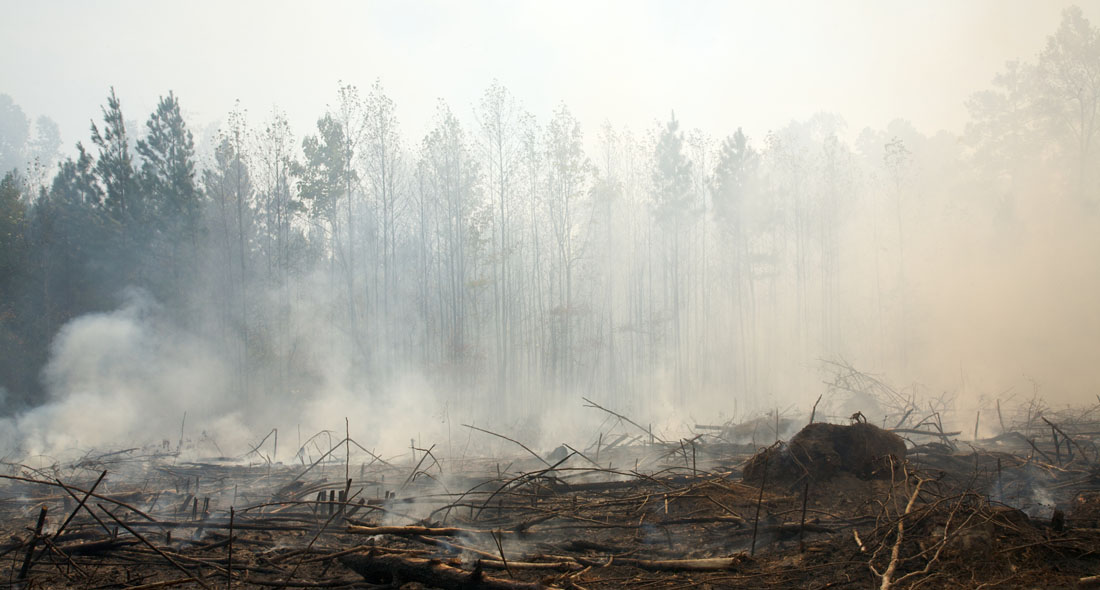
Why Do We Plant Trees?
Up to 90% of land-based animals survive in close proximity to, or dependence upon, trees in some manner. Trees make up the environment and habitat in which these species, among them, man, survive, and prosper. Trees make up the framework on which entire global eco-systems are based, and without them, countless species would soon die out. Through the restoration of native forests, you are providing a continuous and stable habitat for all the animals who rely on the forests for food or shelter. Animal diversity in reforested areas not only improves dramatically, but a tremendous variety of plants also establish themselves under the the leafy canopies of regenerated forests. Even saving a relatively small area of forest encourages new animals, birds and insects to dwell there, and when they do, through their normal actions, they disperse the seeds needed for the woodlands to grow even more. Planting trees in areas damaged by fire is the first step in a vital ecological chain reaction that will quickly become self-sustaining and return huge benefits to ourselves, our children and generations to come.
SOIL EROSION
When trees are removed from the landscape, one resulting consequence is that the underpinning foundation of the soil disappears, and landslides and mudslides are liable to occur. Vital topsoil can be carried away and hillsides can become unstable. Water runoff is dramatically increased when the roots of trees are no longer present to promote its retention. Trees slow down runoff and allow time for the water to seep into the soil and replenish underground water tables and aquifers.
CLIMATE CONTROL
Trees alter the climate of a region by moderating its climate, improving its air quality, conserving water and encouraging bio-diversity. The effects of the sun are dramatically altered by the presence of trees and their large leafy canopies. Excessive radiant energy from the sun is absorbed, filtered or deflected by large deciduous leaves in the summer. Wind speed and direction can be affected by large groups of trees and the downward falling of rain or sleet is intercepted and softened by trees ecological filtering effect. Temperatures are generally cooler around trees, as they affect how much, and how directly, the sun’s rays hit the ground.
TREE FACTS*
There are over 23,000 different kinds of trees in the world.
A tree can absorb as much as 48 pounds of carbon dioxide per year and can sequester 1 ton of carbon dioxide by the time it reaches 40 years old.
Every state has an official State Tree. We do not have a national tree, however, there is a campaign to have the oak adopted as our National Tree.
One large tree can lift up to 100 gallons of water out of the ground and discharge it into the air in a day.
One large tree can provide a day’s supply of oxygen for up to four people.
Each year, one person uses wood and paper products equivalent to a 100 foot tree 18 inches in diameter.
Trees are included in most religions. Some hold certain trees sacred; other use trees to help teach beliefs.
Trees are the largest living organism on earth:
- Some coastal redwoods are over 360 feet tall
- Some swamp ash trees are almost 300 feet tall
- Giant sequoia trees can weigh over 2000 tons (4 million pounds)
Trees are some of the oldest living organism on earth:
- live oaks can live to be over 500 years
- many giant sequoia trees are 2,500 years old
- some bristlecone pines are thought to be over 5000 years old
Trees trap more of the sun’s energy than any other group of organisms on earth — they are in essence big batteries — the largest on earth. Only 0.1% of the sun’s energy is trapped by organisms — trees account for 50% of all energy trapped by organism.
Trees need food to grow but you can’t buy food for them. They make their own food from sunlight, water, carbon dioxide and nutrients from the soil.
Trees do not restore and repair wood that is injured and infected — instead they compartmentalize off the damaged tissue. New cells are not produced to replace the damaged cells.
A tree branch is not actually attached to the rest of the tree. It is held in place by a series of interlocking “collars”. Collars overlap and mesh to form a tight woven pattern of tissue.
During periods of increased or decreased temperature, cracks may develop in the tree trunk — referred to as frost cracks and sun cracks. Both can lead to decay.
Each year trees produce an increment of new growth that covers growth from the previous year.
The age of a tree can be determined by the number of growth rings. The size of the growth ring is determined in part by environmental conditions – temperature, water availability.
Tree trunk cells produced in the spring are larger, have thinner walls and are lighter in color than cells produced in the summer.
Bark is the protective covering of a tree. The outer bark is composed of dead cells. The bark will often split as the trunk diameter increases.
Different parts of the tree grow at different times of the year. A typical pattern is for most of the foliage growth to occur in the spring, followed by trunk growth in the summer and root growth in the fall and winter. Not all trees follow the same pattern.
Tree roots do not grow very deep. Most tree roots are in the top 12 inches of soil.
Tree roots often extend two to three times the width of the tree.